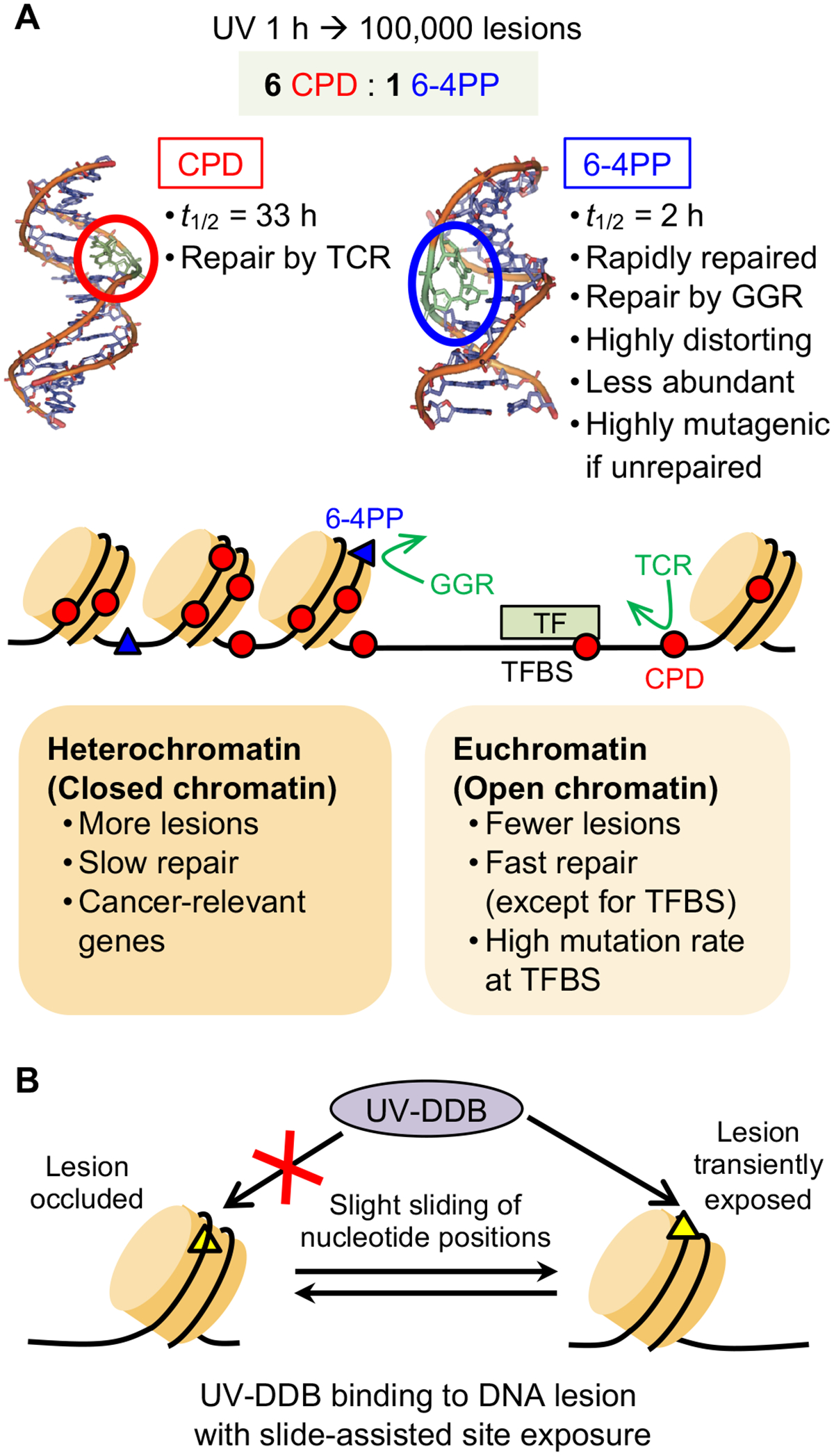Figure 5.

Repair of UV-induced DNA lesions depends on chromatin state and sliding of nucleotide positions. (A) UV irradiation forms dimers at dipyrimidine sites on the same strand, distorting the DNA double helix. The two major types of DNA lesions are cyclobutane pyrimidine dimers (CPDs) and 6–4 photoproducts (6–4PPs), which differ in terms of their abundance, degree of DNA distortion, and the primary mode of repair (global genome repair (GGR) or transcription-coupled repair (TCR)). Chromatin state influences formation and repair of UV-induced DNA lesion; lesions form more frequently and are repaired more slowly in heterochromatin than in euchromatin. Transcription factor binding sites (TFBS) have variable frequency of lesion formation and slow lesion repair that leads to high mutation rate. The structures of DNA double helix with CPD and 6–4PP lesions are adapted with permission from Rastogi, R. P. et al. J Nucleic Acids (2010) 2010:592980. (B) UV-induced DNA lesions that are occluded within a nucleosome undergo ‘slide-assisted site exposure’: slight sliding of nucleotide positions relative to the histone core, without affecting the overall nucleosome architecture. This process transiently exposes occluded lesions to UV-damaged DNA-binding protein (UV-DDB), which recognizes UV damage and initiates global genome repair (GGR).
